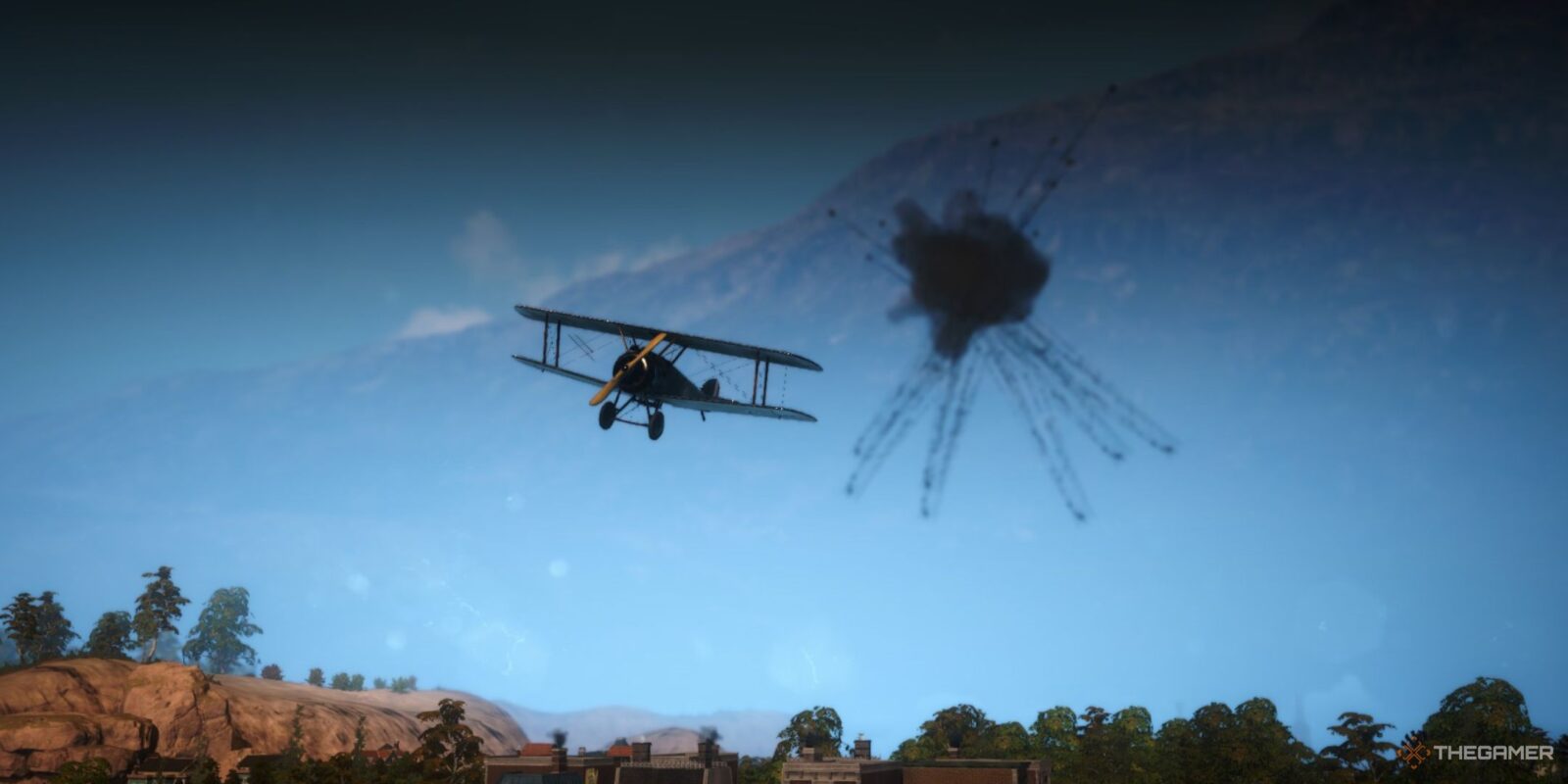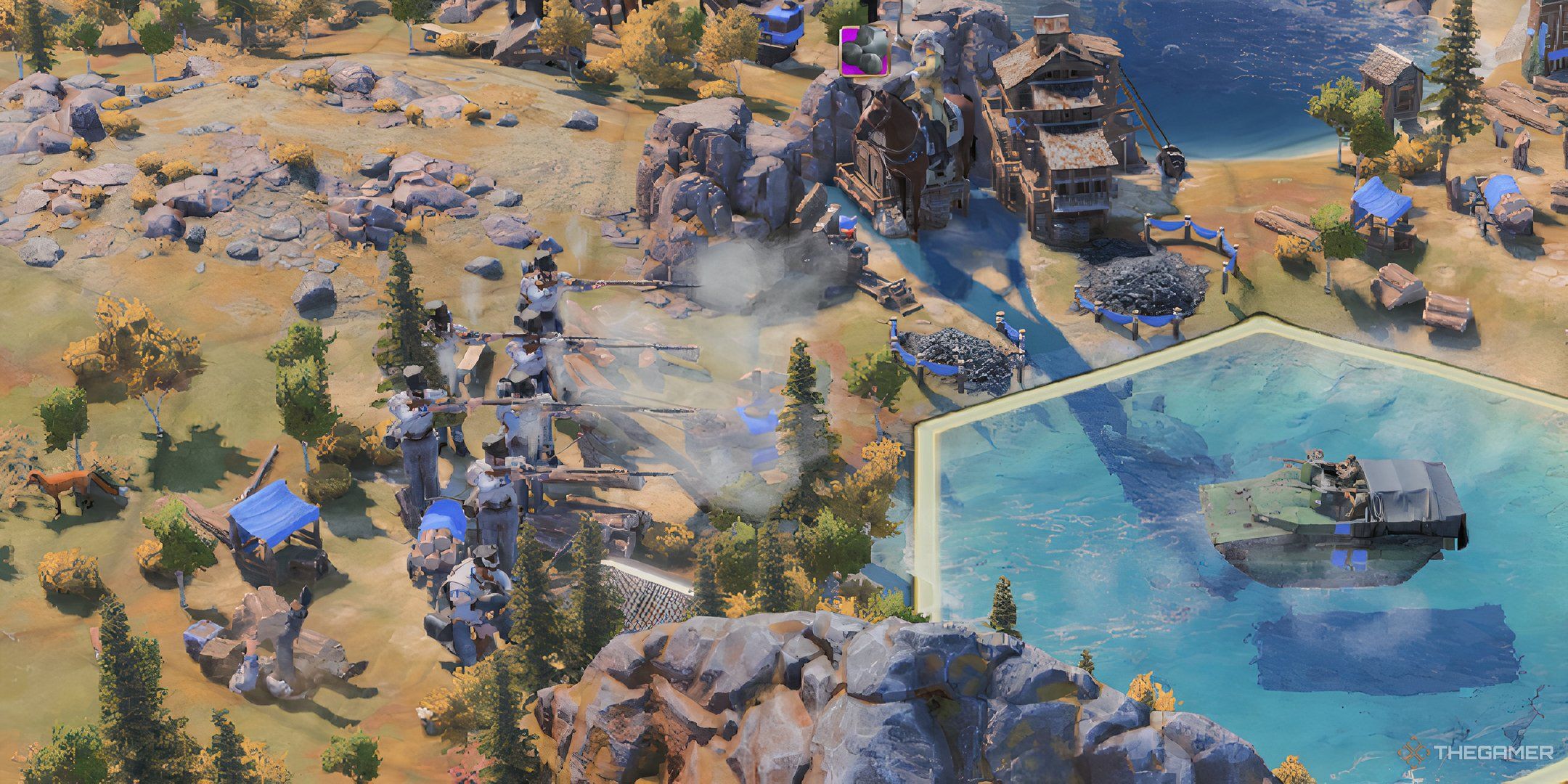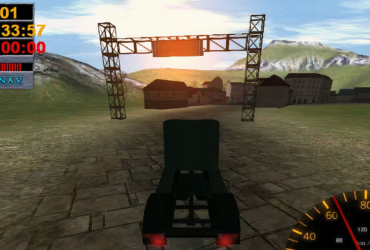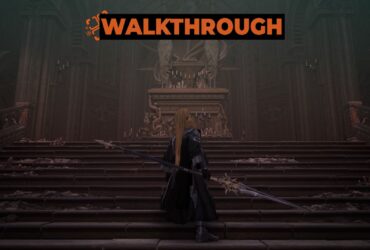Kaiserpunk is a city builder first and foremost, but sooner or later you’ll find yourself sending troops out into the trenches once more, either to defend your new home or to unite the world under your rule. From small-scale skirmishes to meticulously-planned invasions spanning entire continents, warfare is a major part of the game even if you’re just trying to protect what’s yours.
Kaiserpunk’s combat system can seem a little obtuse at first, but once you know what you’re looking at it’s fairly simple. We’ll break it down so that you can plan your strategy with confidence.
Unit Types
Military units are grouped together on the map according to their type; land units in Army Battalions, sea units in Navy Fleets, and air units in Air Force Squadrons. These are headquartered by their respective bases in your city, so for each base you have, you can deploy one Battalion, Fleet, or Squadron.
Regardless of type, each base can support a maximum of eight units.
Land Units
Land units can be Infantry, Artillery, or Tanks. They do the bulk of the fighting in the game, especially on defense. They’re also the only units capable of conquering regions; if a Fleet or Squadron defeats a region’s defenders, the region will just be undefended until an Army Battalion comes to claim it.
Battalions aren’t restricted by Airfields, so as long as they don’t have to cross water via expensive Landing Ships, they’re the most maneuverable unit type as well.
- Infantry are weak individually, but as the cheapest and easiest unit type in the game to recruit and maintain, you can deploy them in large numbers to make up for their mediocre stats. Restricted to small arms, though, they’re best for fighting garrisons and other infantry unless they have support from units with more firepower.
- Artillery deal heavy damage to both land and sea units, making them excellent for coastal defense. They need protection from Infantry and Tanks, though, as their overall Health leaves something to be desired when weighed against the expense of producing them.
- Tanks have the most HP out of any land unit by more than double, giving your Battalions much-needed endurance in the field. They’re just about as powerful as Artillery when fighting on land, but unlike Artillery they can’t effectively fight back against bombardments from ships.
Like ships, a full Tank Battalion is expensive to produce and maintain (you’ll likely need several Vehicle Factories working at once to keep up with demand), but is exceptional in ground combat, all other factors being equal.
Sea Units
Ships have only a single unit class, so the only consideration when building your navies is how much you want to spend on developing the more expensive high-tier variants. A fleet of Battleships will devastate any foe in its path, but the fuel and shells necessary to keep it running will run up some truly heinous costs.
Ships move slowly along sea lanes, but once they’re in position, a shore bombardment is one of the most powerful tactics in the game. Unless your opponent has a fleet of their own to intercept or a large Artillery emplacement to fire back, ships deal massive damage to land units while taking little in return.
A purely naval engagement, on the other hand, is often decided simply by numbers if both squadrons are of equal ship classes.
Ships deal less damage to air units; use this to your advantage by sending Bombers to soften them up before attacking with your own fleet. By the same token, equip your own fleets with Carriers or keep them in range of your Airbases so that your Fighters can chase off enemy Bombers who would do this to you.
Air Units
Air units must be stationed at an Airfield or Carrier on the World Map, and can operate within two regions of their base. They’re divided into two classes, each with a distinct and equally-important role.
- Bombers damage land units and ships, usually avoiding any damage in return. They don’t do quite enough damage to destroy enemies outright in most cases, but they are capable of weakening foes enough for the army to march in and finish the job.
- Fighters are only strong against other aircraft, so their job is to destroy enemy Bombers and prevent them from attacking your land and sea troops. They also clear away enemy Fighters to ensure your Bombers can attack without fear.
If you can afford it, it’s wise to have separate Squadrons for Fighters and Bombers. That way, the Fighters can fly in first to dispatch any enemy planes, then the Bombers can start a run immediately afterward when the path is clear.
Range And Damage
Units can attack any region or sea zone to which they’re adjacnet (or, in the case of air units, within their flight range). That means that land units can attack ships off the coast, and vice versa. However, attacking a region means that all the units and garrisons stationed there will fight back, while attackers can only strike with one battalion, fleet, or squadron at a time.
Range
Attacks are resolved in order from the longest-range units to the shortest, with defenders going first at each range. This means that attacks are resolved in the following order:
|
Range |
Units |
|---|---|
|
Long (Goes First) |
Garrisons, Artillery, Fighters, Bombers |
|
Mid (Goes Second) |
Tanks, Ships |
|
Close (Goes Last) |
Infantry |
If a unit is destroyed before their turn comes up, they won’t be able to attack back.
Damage
Each unit has a different damage rating based on which unit type they’re attacking; their damage against land units is shown on orange, their damage against ships is in dark blue, and their damage against planes is in light blue.
When a group of unit attacks on their turn (again, as determined by their range), they deal all their damage from each category as long as there is an appropriate target present. For example, if there are no ships to attack, a unit will deal their land and air damage, but the sea damage will simply not find a target and be wasted.
Damage is divided evenly among all enemy units of the target type. This usually means that Infantry and Fighters will be the first to die unless you keep them reinforced between engagements. Without those smaller units to soak up damage, larger units like Tanks will quickly succumb in subsequent battles.
Use the cooldown between moves and attacks to reinforce damaged units. It pays to have a stockpile of vehicles and firearms specifically for this purpose.
Terrain
Each region has a Terrain type that modifies the damage dealt by some unit types. The modifier is different based on whether the unit is attacking or defending, making some regions much more defensible than others. For example, in Urban Terrain, Infantry deal more damage on both attack and defense; attacking Artillery and Fighters, however, take a penalty as the buildings make it harder for them to get targets, while defending Bombers also deal less damage as they have to avoid damaging their own nation’s infrastructure.
Paying attention to the terrain in a theater of war and adjusting your unit composition accordingly can mean the difference between victory and defeat. You can replace an existing unit in a Battalion, Navy, or Squadron by selecting it in its battlegroup’s info panel.

Related
Best Strategy Games You Can Play Offline
You won’t need an internet connection to enjoy these strategy games.














Leave a Reply